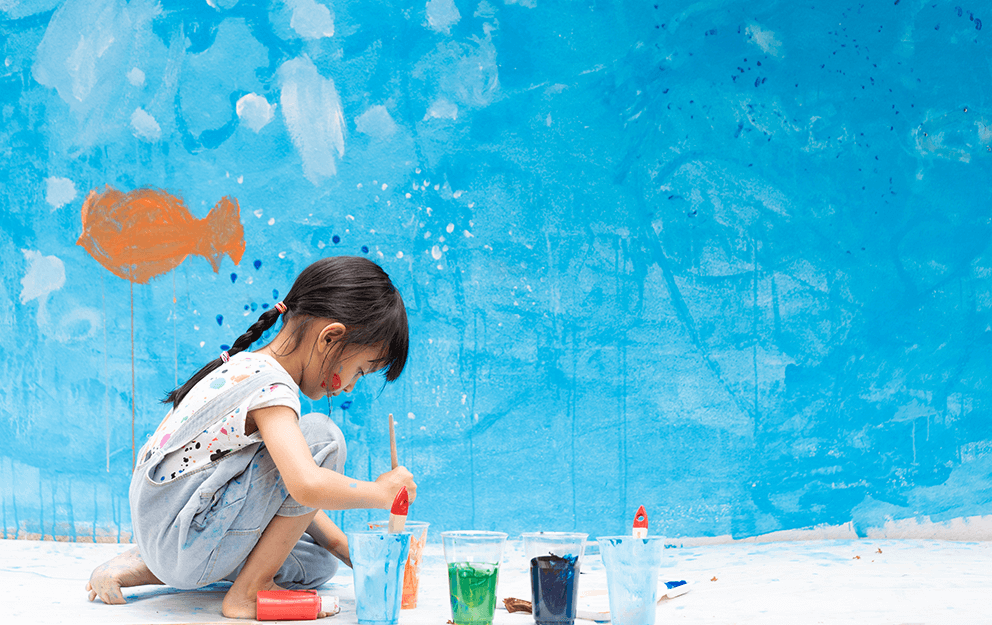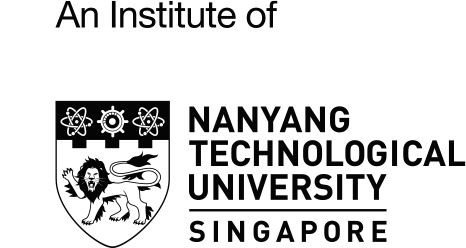
By Assistant Professor Rebecca Heaton, Visual and Performing Arts, NIE
See the world anew through the arts. Give our youths fresh eyes and open minds to explore and reinterpret the world around them. The insights and revelations they gain will be invaluable in helping them cultivate, create, and craft a safer future for all.
Art education now occurs in a ‘Post Internet’ and ‘post digital’ age (Tavin, Golb and Tervo, 2021). It exists in an era where art is central to everyday living. Art education involves the Internet and digital navigation and provides a means for people to dialogue with the world and its changes. Art education, as a subject, is breaking educational boundaries. Through decolonisation, it is challenging social and cultural norms, bringing people together and helping them to live in harmony.
Art education is infused into our social, economic, and cultural experiences. By chance, we may encounter installations when exploring local or global sites. We may find ourselves discussing advertisements or paraphernalia as part of our visual cultural experience and we may engage in workshops offered by museums and galleries to enhance our artistic or cultural knowledge. Through these experiences we cognitively engage to different extents in art education (Heaton, 2021), helping it to become positioned as an essential educational subject. Yet even though we know art’s presence in life is great, many people are still reluctant to accept its position and value in the formal educational experience.
Art educators suggest that art education should be an accessible and inclusive subject that enables learners to explore differences while offering a means to craft new narratives about ourselves and the world we live in. As our future generation, our youths should be afforded an opportunity in art education to experience and interact with the world in new ways. Educators, parents, and caregivers hope for the young to be successful, but what constitutes success is different for every individual, and should go beyond the achievements of good academic grades.
If art education is to encourage the young to make conversations with the world, then the subject needs to allow learners to build local, global and ‘glocal’ attention (Hofsess, 2021; Yang & Ang, 2021). It needs to provide space to engage with digital transformation (Edwards, Caldwell, & Heaton, 2021) and it needs to respond to visual cultural contexts as they evolve (Wilson, 2020). Changes in art education narratives, such as enabling children to explore current issues, like ecological concerns or sustainability, should be encouraged to ensure learners explore and become equipped with competencies, values and dispositions that can prepare them to be resilient in and beyond their current and future educational and personal experiences.
In Singapore, we are seeing a revived focus on arts and art education. Most recently, we have seen Singapore’s first university for the arts established. The National Arts Council’s Arts Plan (2018-2022), which is committed to investment and community generation in the arts, has also been active in supporting the local art scene. Engagements in the arts and cultural sector were also at their highest before the pandemic. Research outputs from NIE’s Centre for Arts Research in Education (CARE) have demonstrated that art education has the capacity to connect diverse community groups. The research highlighted how art education was valuable in revealing the voice of underprivileged and underrepresented communities, and how it could unite children and their families while assisting in identity formation. It is therefore timely to discuss the role art education plays in shaping values, and how such values may translate into the community as we navigate an exit strategy from the pandemic.
During the pandemic, we have seen people turning to the arts as a coping mechanism. This is a positive move as it is well established that art engagement can teach us to understand and solve problems. To exemplify, more people were engaging with paint, pottery, and other experiential arts. This could be because the arts offer therapeutic and expressive benefits. They help people cope with stress and often provide a form of escape or solace from mundane, busy, or challenging circumstances.
Engagement in the arts teaches us how problems can alter in response to circumstances. It also helps us to understand and celebrate multiple perspectives. Now that we are entering into post-pandemic education, many of us will be trying to make sense of pandemic events, contemplating dissonance, and forging new learning. We must continue therefore to honour the offering of art education and use it to teach values relevant to our time. It is becoming more established that the arts contribute to the development of 21st-century skills, like confidence and critical thinking (Corbisiero-Drakos, Reeder, Ricciardi, Zacharia, & Harnett, 2021). However, the arts can also teach other values which focus on building understandings of citizenship, sustainability, difference, and resilience. Engagement with such values is extremely important to learning, character development and community cohesion because they help learners understand themselves and others as time evolves.
So, how are these values being taught through art education and what are their societal contributions?
In art education, values education can manifest in many ways, such as through understanding how mindfulness and moral practice can be explored through art-making and then cascaded into school and community provision. Several Singapore schools have recently engaged in partnerships and collaborations with artists, poets, and musicians to let children learn about how the arts can teach values whilst being situated in the professional world. Artist engagement, whether online or face to face, can teach children and their families not only about art skills and practices, but about economic, cultural, and political values. For example, one of the schools worked with illustrators online to teach its pupils how art can manifest as a career. The collaboration taught learners and their families how artists require and use resilience in idea generation and development processes. It also taught them that art making involves trial and error and economic setbacks, like the pandemic, could make it challenging for artists to sell their work and earn a living.
The pedagogic approach and partnership the school adopted, which connected local children and their families with international arts professionals online, enabled the participants to understand how art is placed in the world at present. It facilitated a dialogue, with art at the core, between industry, education, and personal communities. Through dialogues, art education can help learners understand ethics (Williams, 2016). By experiencing or creating art, students can explore the nuances of interpretation, relevance, choice, and power as examples. In doing so, they can understand how concepts shape values for themselves.
An understanding of why things happen, or the way beliefs and values are formed is beneficial to students today. It keeps them open to new possibilities. Cultivation of such an open mindset is useful in understanding how local and global issues, like racism and environmentalism, can be tackled in new ways.
Many artists now use their art to explore issues, generate responses, and present solutions. Art learners should also have this opportunity because such mindsets can guide individuals about their choices, whilst demonstrating that their artistic contributions can generate positive changes. Art education can be delivered to challenge issues like racism. The National Society for Art and Design Education (NSEAD) in the United Kingdom published an Anti-Racist Art Education document in 2021 to support educators to cultivate such values in educational settings. It demonstrated how policy can effectively contribute to value formation in educational contexts.
Academics also suggest that educators have a responsibility to engage with local and global concerns and that art education is well-positioned to do this because it can afford educators and pupils opportunities to question everyday occurrences and challenges with openness. However, an open and mutually developed philosophy needs to be cascaded and accepted by stakeholders for such provisions to be effective.
Art education should be an inclusive subject. Considered provisions by educational stakeholders could promote anti-ableist behaviours (Penketh, 2020), unite people together and offer the means for discussion and exploration. Dialogue presents opportunities for ethical studies, which afford opportunities for the reconsideration of beliefs, values and resulting actions underpinning these ethical considerations. Ethical contemplation is important in being open and sensitive to different opinions, a practice that is necessary to maintain harmony. To shape values in art education and translate messages to the community, the multiple stakeholders in art education—the government, arts and education providers, societies, their staff, parents, and pupils—must collaborate to model value consideration and creation.
By modelling value engagement in life, art, and education, positive strategies to consider values become accessible to the young. These strategies can eventually gain presence in communities as people apply their values to different aspects of their lives. As you experience your day, take some time to consider the presence of the arts in your existence, in the objects you engage with, in the culture or contexts around you, and in the stories that you tell. You may then see how the arts play a central role in human existence. Today, we exist in a time of cultural saturation. Art education is essential for learners to dissect, connect and craft their current and future worlds in a safe space.
Support our young people in the arts. Visit NIE CARE for upcoming events as well as access to past events and other useful resources.
References
- Corbisiero-Drakos, L., Reeder, L., Ricciardi, L., Zacharia, J., & Harnett, S. (2021). Arts integration and 21st century skills: A study of learners and teachers. International Journal of Education & the Arts, 22(2). doi:10.26209/ijea22n2
- Edwards, J., Caldwell, H., & Heaton, R. (2021). Art in the primary school: Creating art in the real and digital world. London: Routledge.
- Heaton, R. (2021). Cognition in art education. British Educational Research Journal. doi.org/10.1002/berj.3728
- Hofsess, B., (2021) Renewing a craftsmanship of attention with the world. Studies in Art Education, 62(2), 184-190. doi: 10.1080/00393541.2021.1896266
- NSEAD (2021) Anti-Racist Art Education Action. National Society for Art and Design Education, United Kingdom. Retrieved from: https://www.nsead.org/files/008b41a518bf1a3e53d91e70690c0c00.pdf
- Penketh, C. (2020). Towards a vital pedagogy: Learning from anti-ableist practice in art education. International Journal of Education through Art. 16(1), 13-27. doi: 10.1386/eta_00014_1
- Tavin, K., Kolb, G., & Tervo, J., (Eds.) (2021) Post digital, Post-Internet art and education: The future is all over. Palgrave MacMillan. doi.org/10.1007/978-3-030-73770-2
- Williams, J. (2016). Art education with attitude. Journal of Social Science Education. 15(4), 7-13. doi:10.2390/jsse-v15-i4-1491
- Wilson, B. (2020). Art classrooms, comic markets, and the digital cosmos: Children's visual worlds as pedagogical spaces. In K. Freedman, E. Hall and N. Meager (Eds.) The International Encyclopedia of Art and Design Education. doi:10.1002/9781118978061.ead011
- Yang W, Li H, Ang L. (2021) Early childhood curriculum policies and practices in Singapore: The case of glocalisation. Policy Futures in Education.19(2), 131-138. doi:10.1177/1478210320987689



